
Doma
Doma is a gem of a restaurant hidden away at Clinton and College in Little Italy . This space was last occupied by Backwoods Smokehouse (and Red Sauce prior to that, and Acadia before that...), but now it's plating something more rare in Toronto: French-inspired Korean cuisine that uses French and fine-dining culinary techniques with Korean flavours.
This restaurant is a first-time endeavour for owner/chef Paul Kim, who is originally from Seoul. He studied at Le Cordon Bleu, and is now merging together his training with his cultural background to create something unique. Kim wants to change people's perceptions of Korean food by offering up a more refined version to patrons.
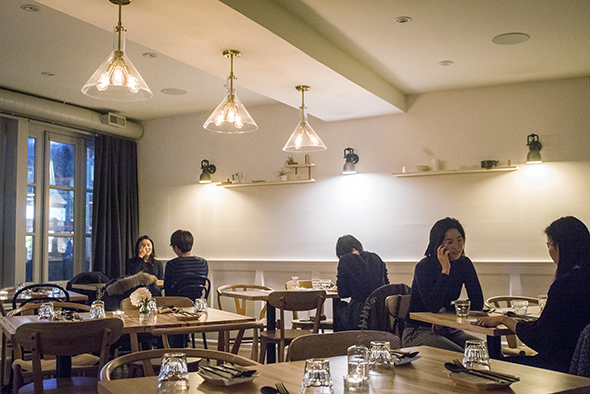
His girlfriend Jenna Lee is responsible for the minimalist and aesthetically pleasing interior design and branding for Doma, from the business cards to the eye-catching cutlery in this 43-seat space (and an additional 38 when the front patio is open). Simple, clean lines and light-coloured wood and walls make this a serene, warm and modern place to dine.
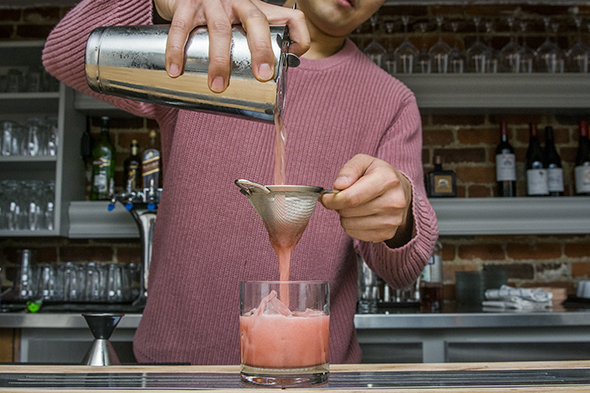
Wine, beer and spirits are curated by Drinksmith , a craft cocktail company co-founded by Kim's friend. I'm skeptical at first, but impressed after I actually try a few beverages.
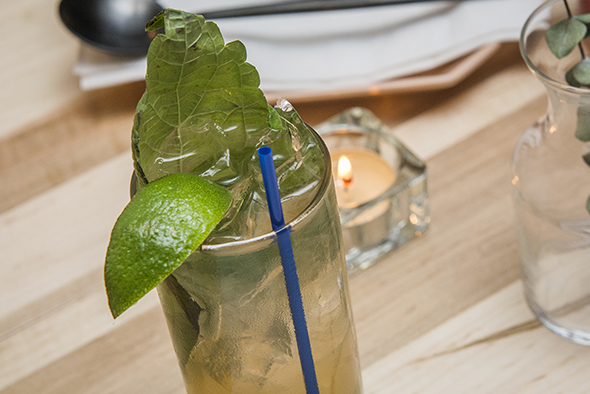
Like the dishes on offer, specially designed house cocktails ($13 each) also incorporate Korean ingredients. The Next Generation, a soju-based mojito-like drink that uses the distinctively Korean perilla leaf, plus ginger beer, maple and lime, has a nice zing and sweetness to it.
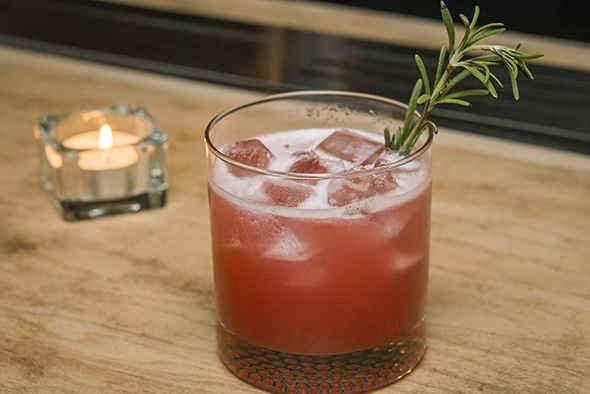
In Harmony, a perfect aperitif cocktail with Campari, grapefruit, lime, sesame orgeat and toasted rosemary, looks appealing with a sprig of rosemary as garnish, and has a not-too-bitter, surprisingly complex flavour profile (I suspect it's the sesame orgeat and toasted rosemary that keep me intrigued).
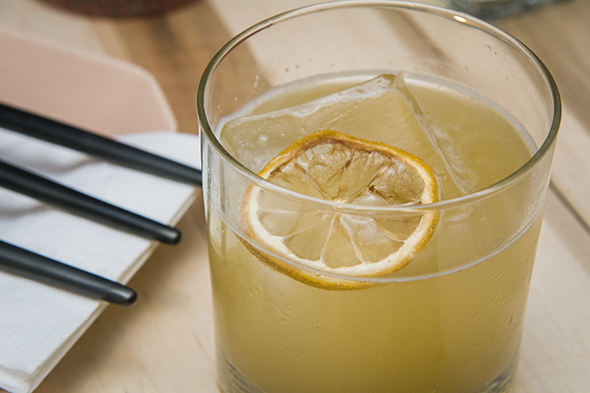
Other concoctions of note are the Pear of My Eye, containing Tito's vodka, Disaronno, Asian pear and lemon, along with The Antidote, a tasty mix of Johnnie Walker Red Label Scotch, yuzu, ginger and honey-yuzu marmalade.
There are also bottles of craft beer and cider ($7-$12) available, and Old and New World wines by the glass ($10-$14) or bottle ($50-$100), including biodynamic options.
Kim's concise food menu consists of plates that are meant to be shared, and will change up monthly to keep things interesting, with the plan to carry over a few customer faves each month. ( Doma means "cutting board" in Korean.) When we visit, there are seven dishes plus two desserts, all listed by ingredients.
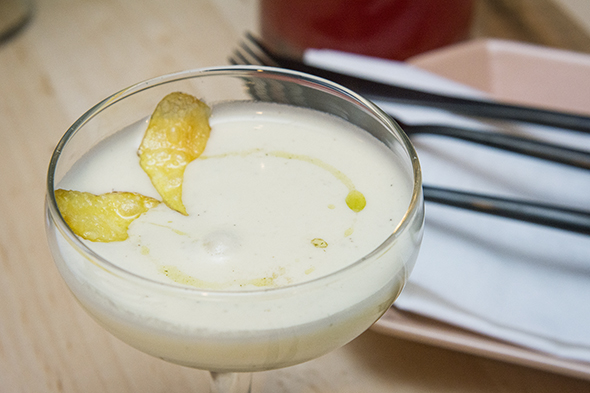
We start with an amuse bouche, a potato and garlic espuma with perilla leaf oil and house-made fingerling potato chips, and it's sublime (I pretty much inhale it).
The contrasts between heavy-sounding ingredients (potatoes, cream) and the resulting lightness of the foam, yet still-satisfying flavours (the chips add some nice crunchy texture and an addictive hit of salt) are impressive.
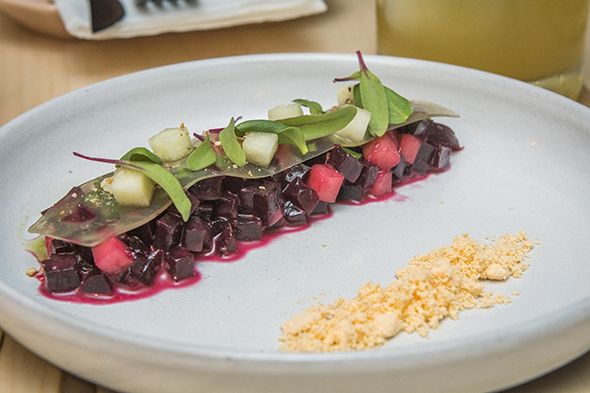
A beet salad with Asian pear and perilla leaf ($12) looks as good as it tastes. An artistic composition of beet, gochujang, rice vinegar, chili oil, apple, almond and perilla oil, it's a pleasurable combo of sweet, spicy and tart, with molecular gastronomy additions of an apple-flavoured gelatin sheet and chili "oil" powder making the dish more amusing to eat.
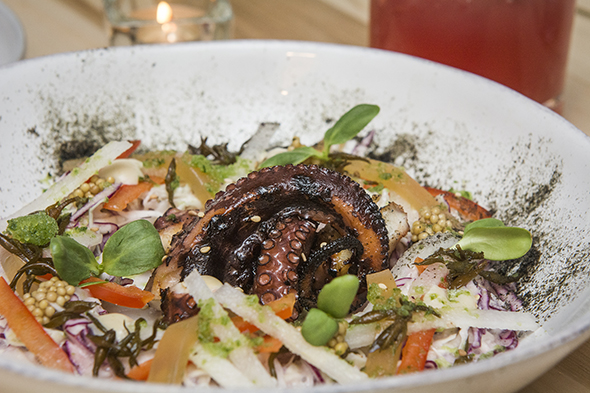
My dining companion's favourite of the night is the grilled octopus salad ($21), a mĂŠlange of meaty-but-tender octopus, konjak (a jelly-like substance), mustard seed, cucumber, pear, watercress, bell pepper, sesame and a wasabi-like Korean mustard dressing. This tastes of the ocean (as it should), and the pickled mustard seed works well with the octopus.
For seafood-lovers, there is also a fish (the type changes daily depending on what's fresh when Kim goes to the market that morning - when we visit it's sea bream), scallop and clam dish ($24) that comes with prawn, kimchi "gnocchi," yellow zucchini and peas in a veloutĂŠ sauce of perilla seed, Korean chili powder, house-made shrimp oil and fish stock.
This is Eurasian fusion at its finest; the kimchi gnocchi, which is somewhere between gnocchi and ddukbokki (Korean fried rice cakes) in consistency, is a bit less chewy than ddukbokki , and pretty delicious accompanied by the fresh seafood and creamy sauce.
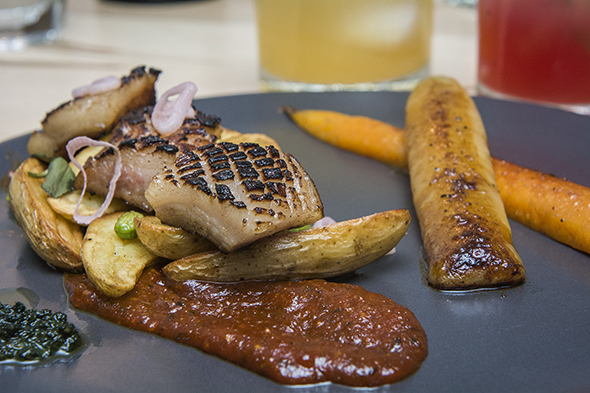
Pork jowl ($22) with pickled shallots, perilla leaf pesto, yuzu-gochujang sauce, fingerling potato, lotus root and heritage carrots with maple glaze look almost too good to eat. The fatty pork jowl, with a tantalizing char on top, is first cooked sous-vide for five to six hours. It's a dish that again combines European ideas with Korean ingredients in a way that works.
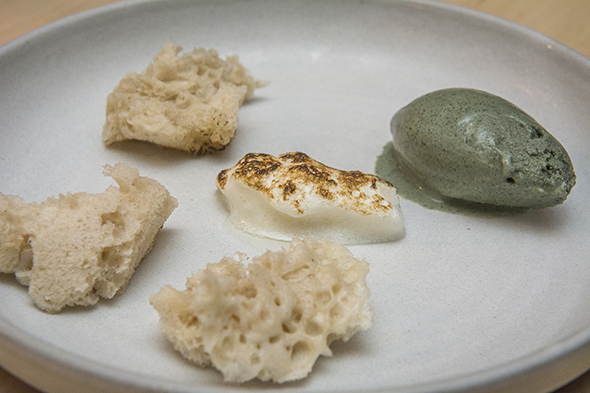
One of the desserts is a house-made mugwort ice cream ($10) served with pulled-apart pieces of red-bean sponge cake and a torched yuzu meringue. Mugwort is like matcha's more herbaceous cousin. The not-too-sweet sponge cake and the hint of citrus from the meringue provide a pleasing balance to the ice cream's touch of bitterness.
You can eat the whole tasting menu (and choose one dessert) for $65/person, which is reasonable, considering the level of skill involved in making these dishes. We definitely would have tried everything if we'd arrived hungrier (a lesson for my next visit).
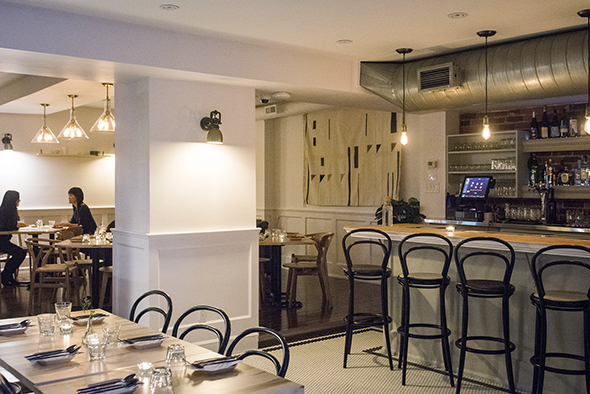
This is a wonderful discovery for those who want to be charmed by a dining experience that ventures off the beaten path, where the journey feels worthwhile in the end.
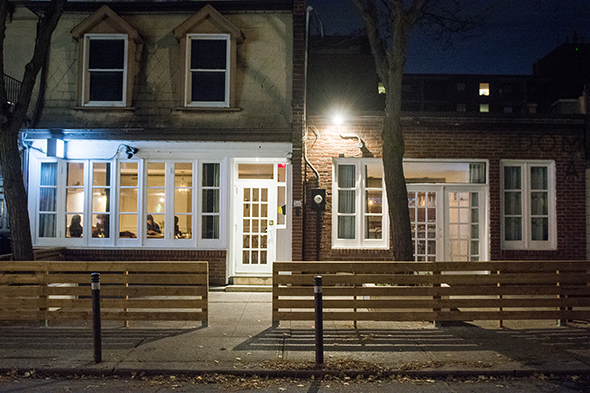
Photos by Hector Vasquez.







